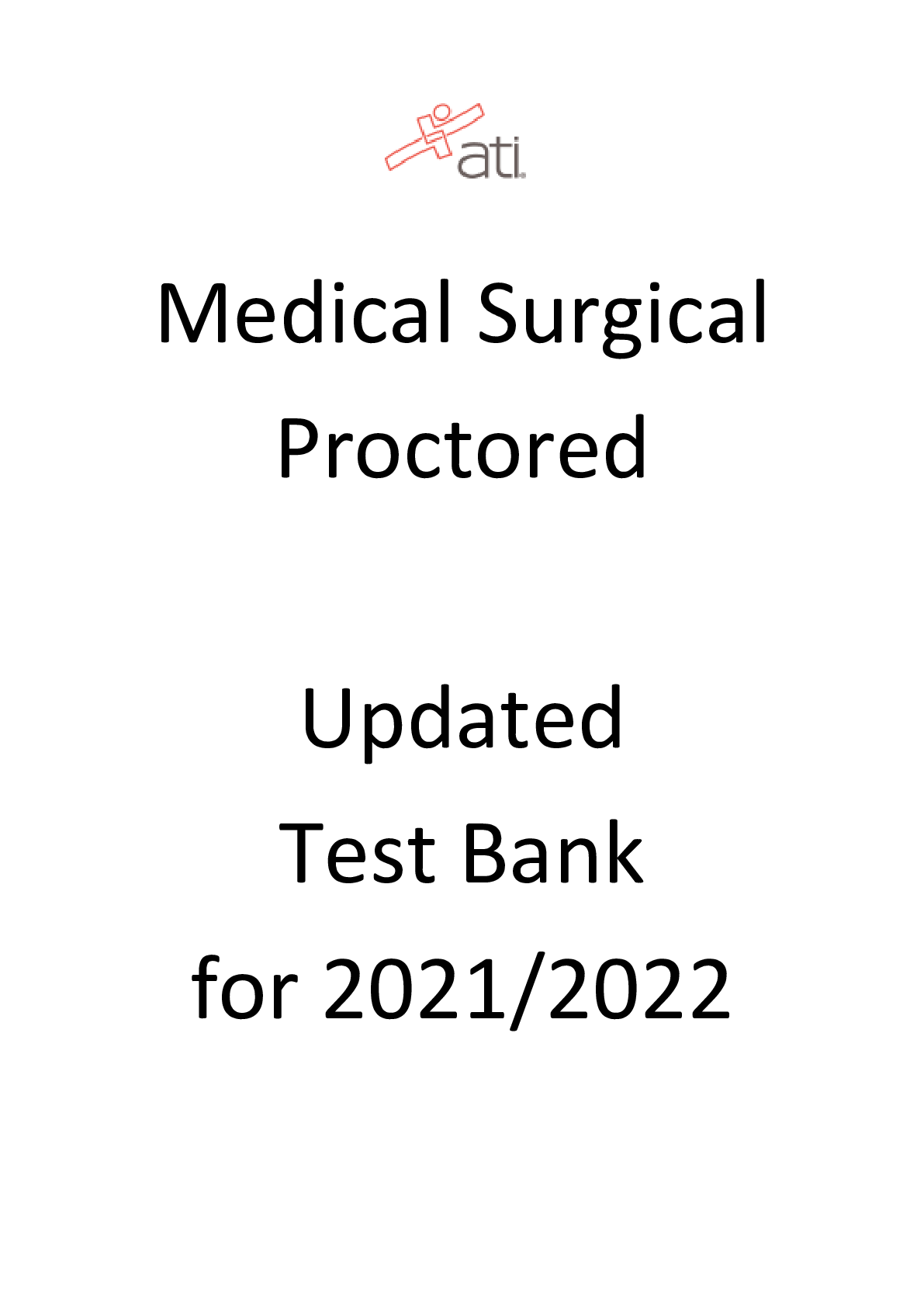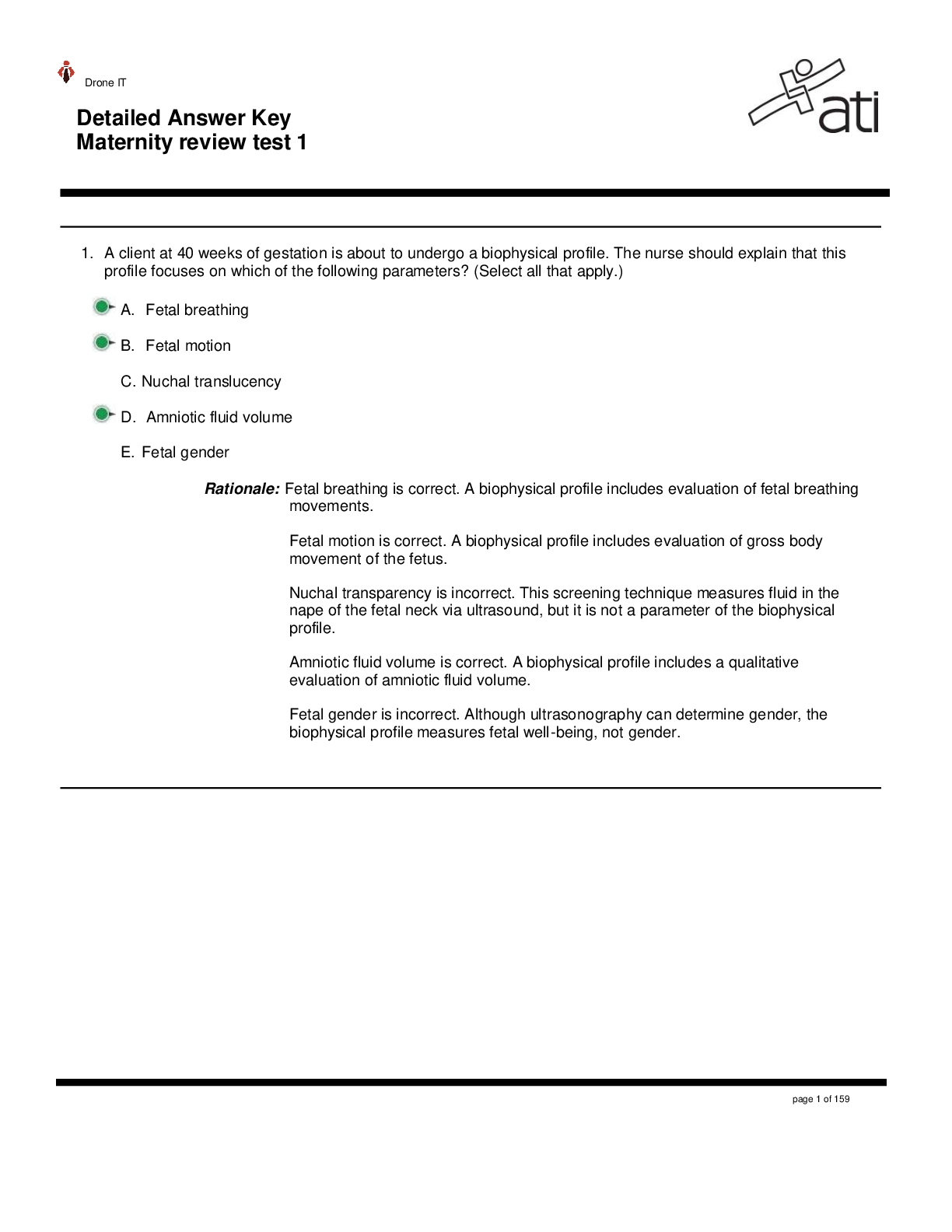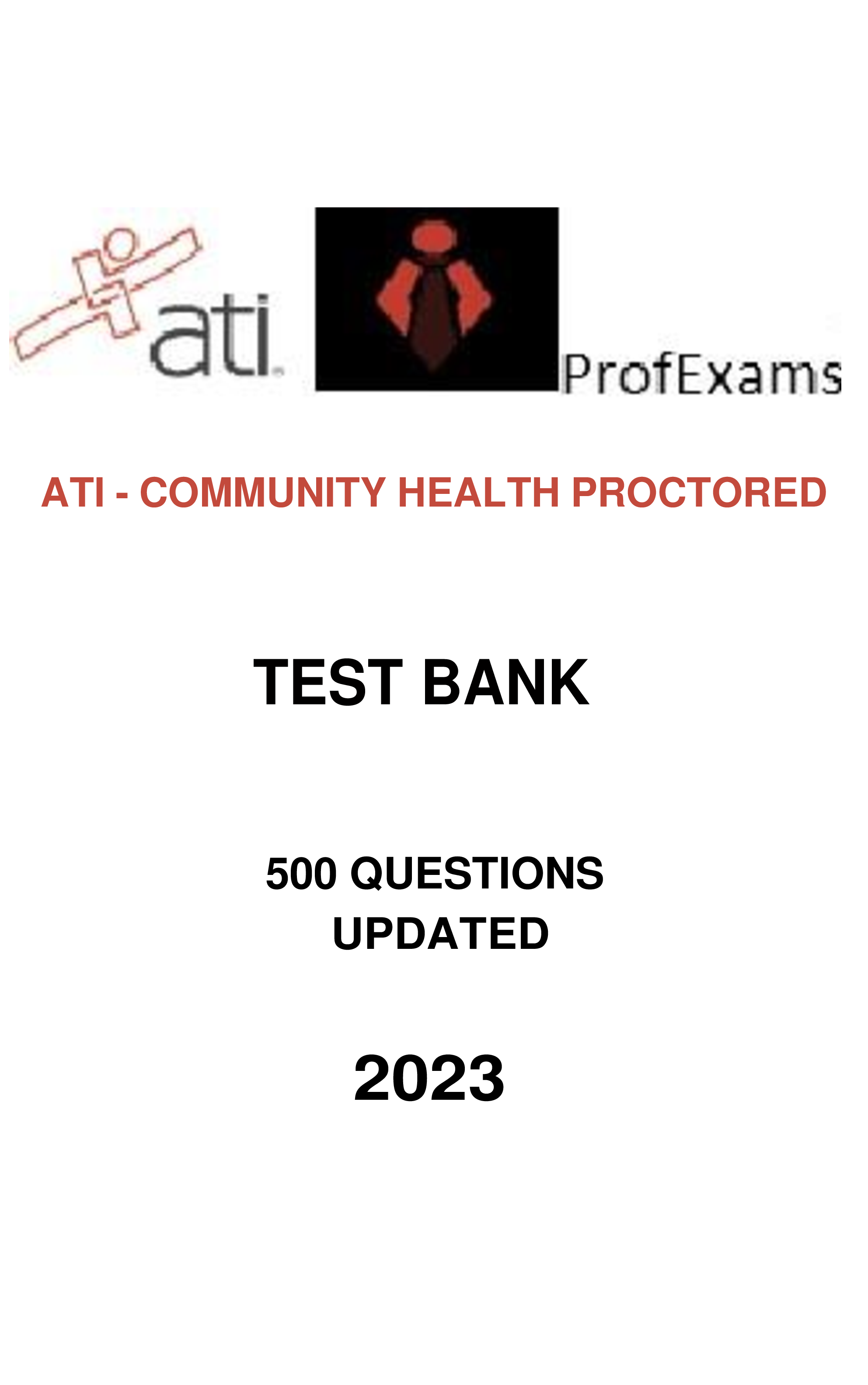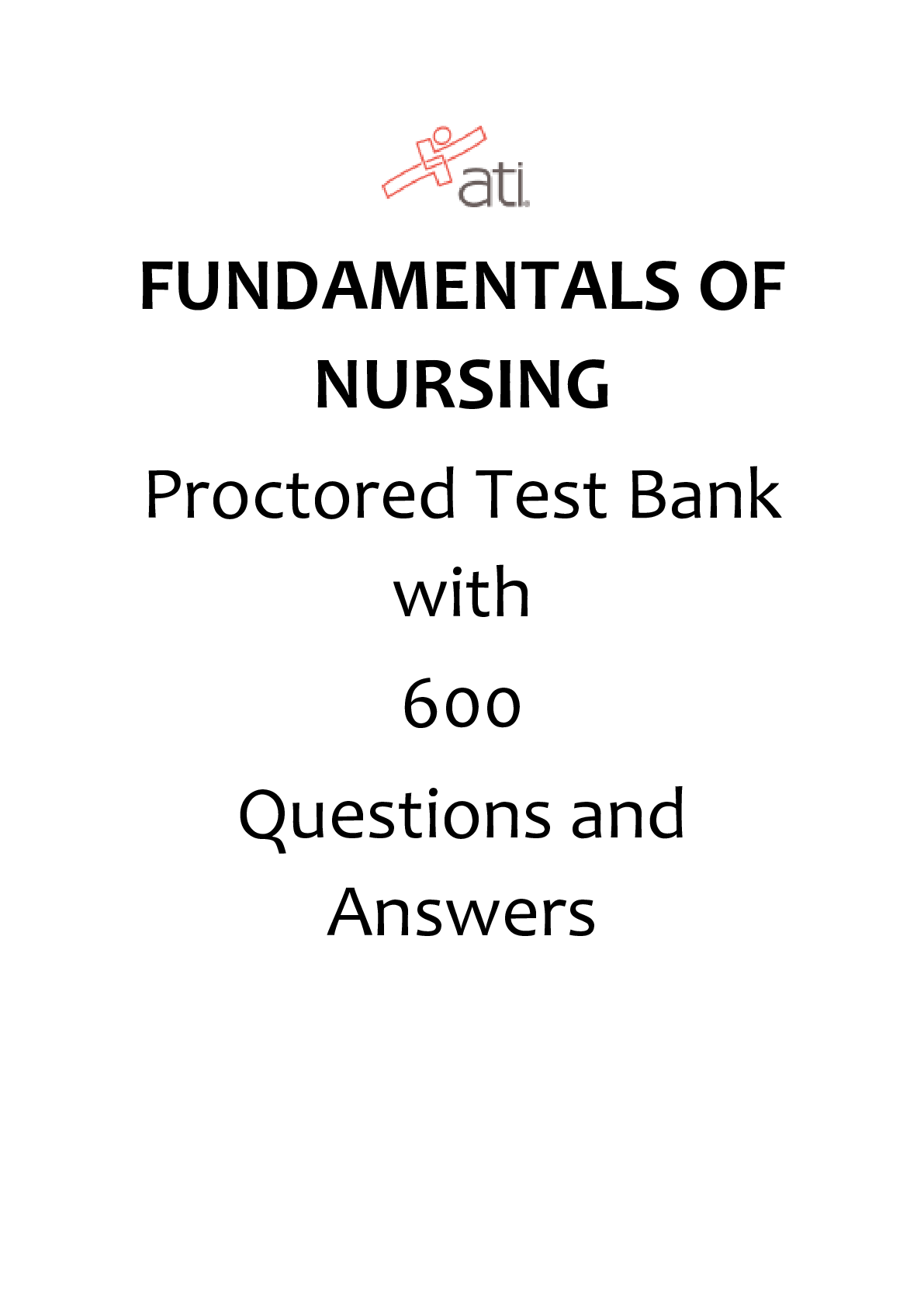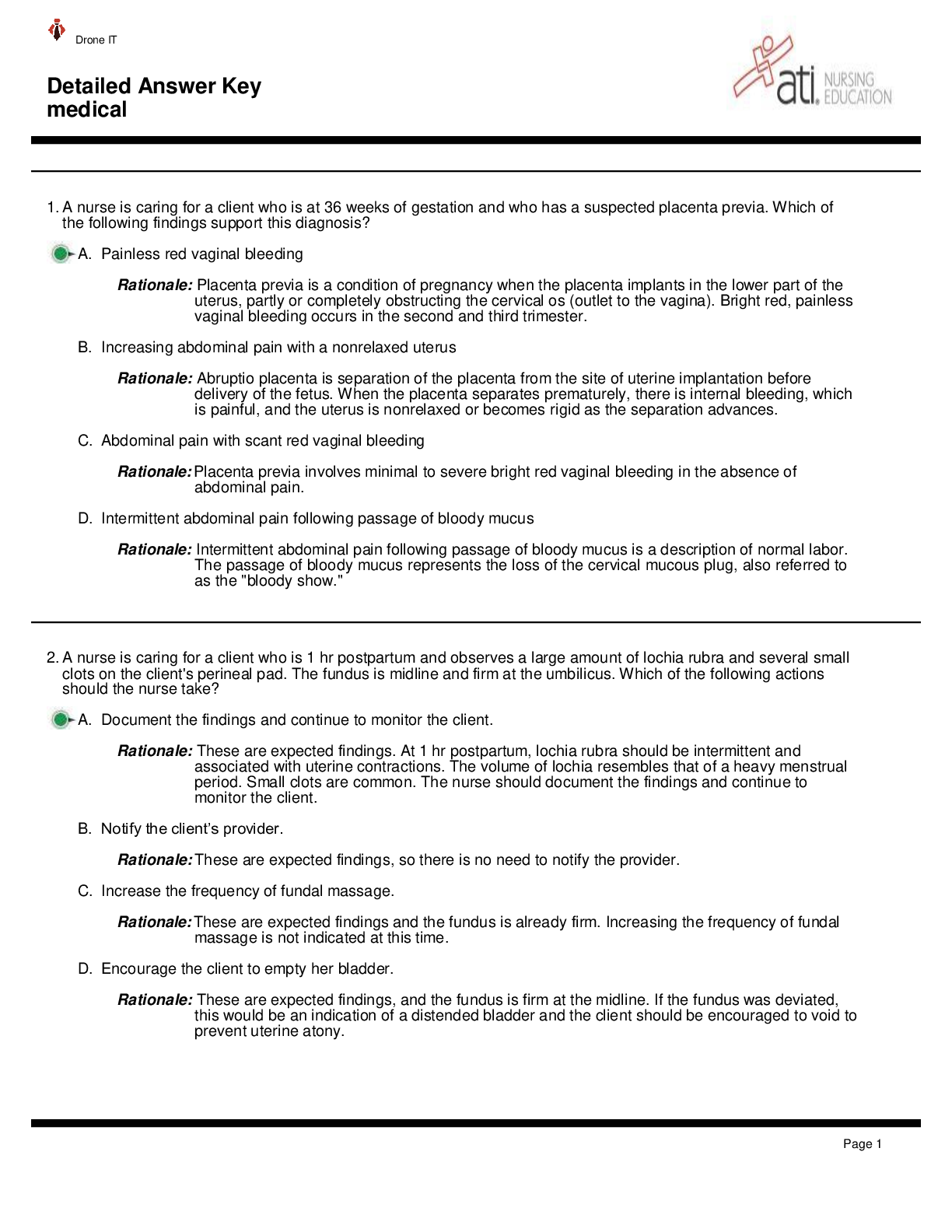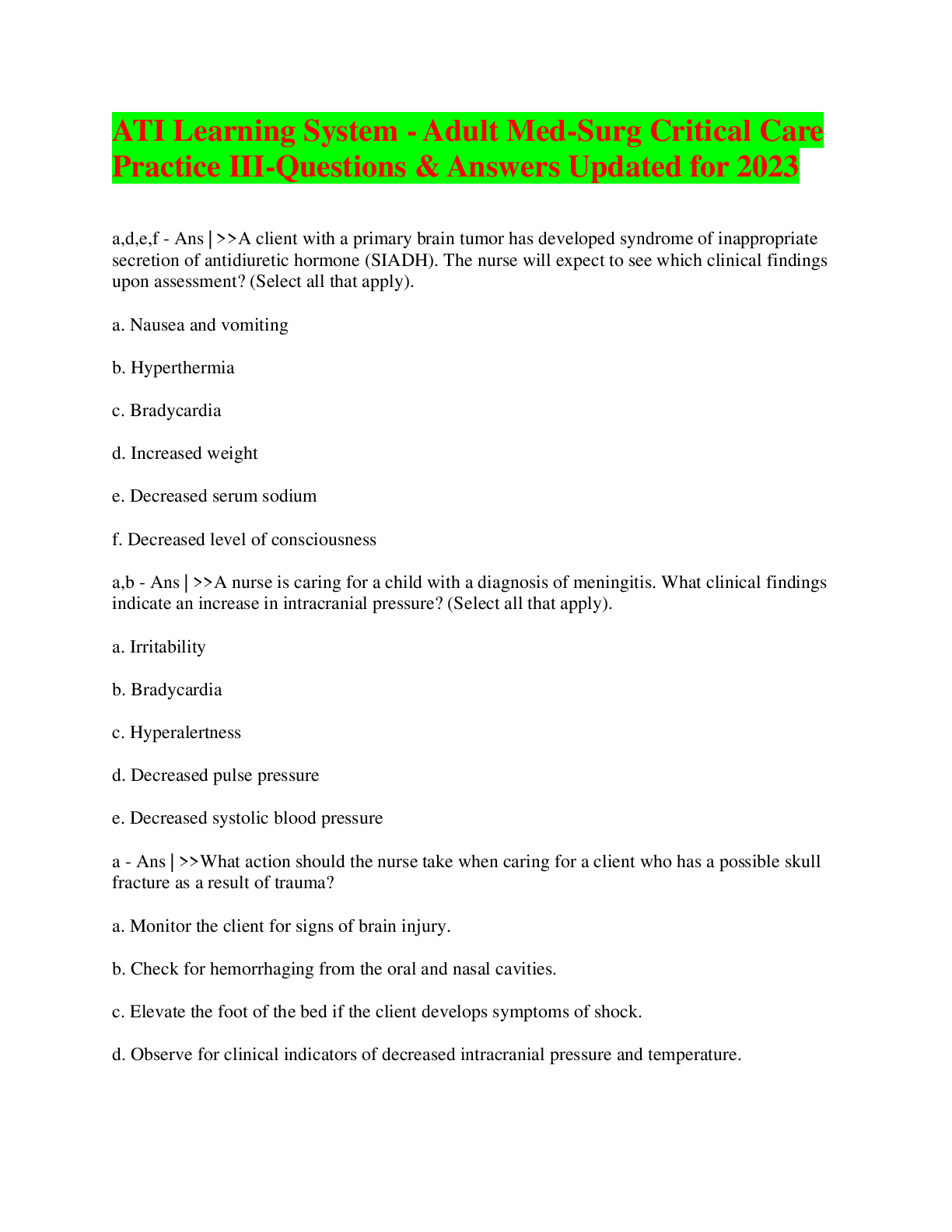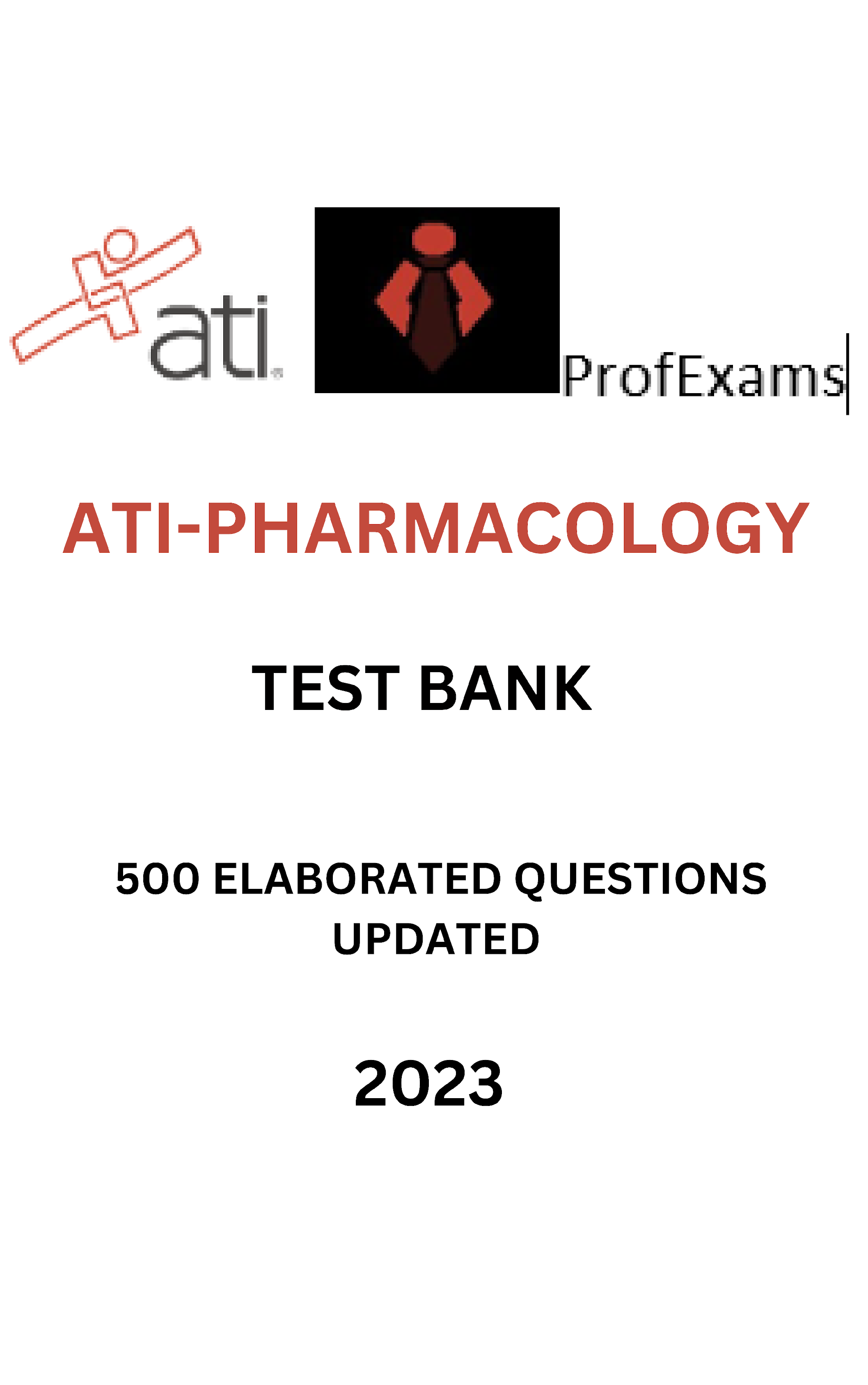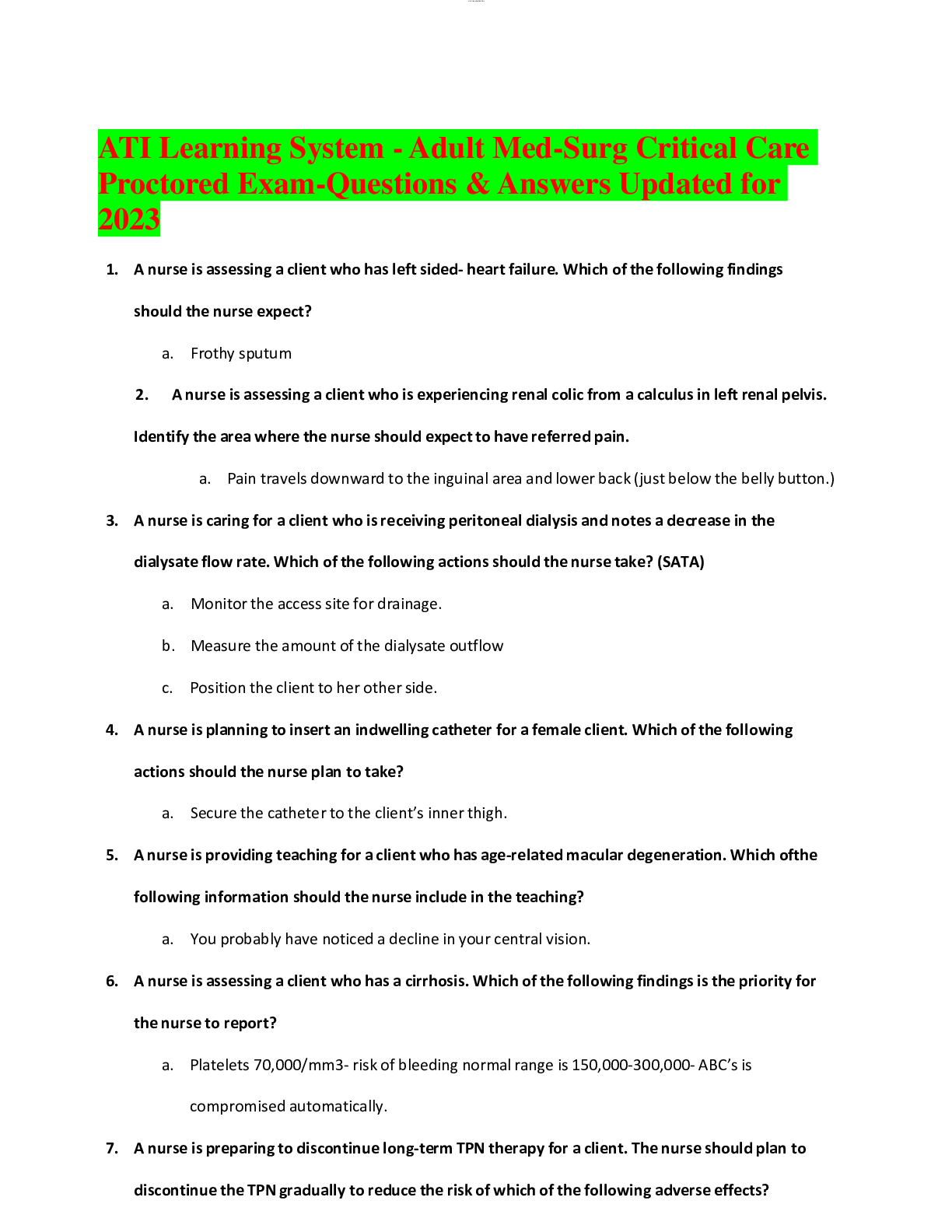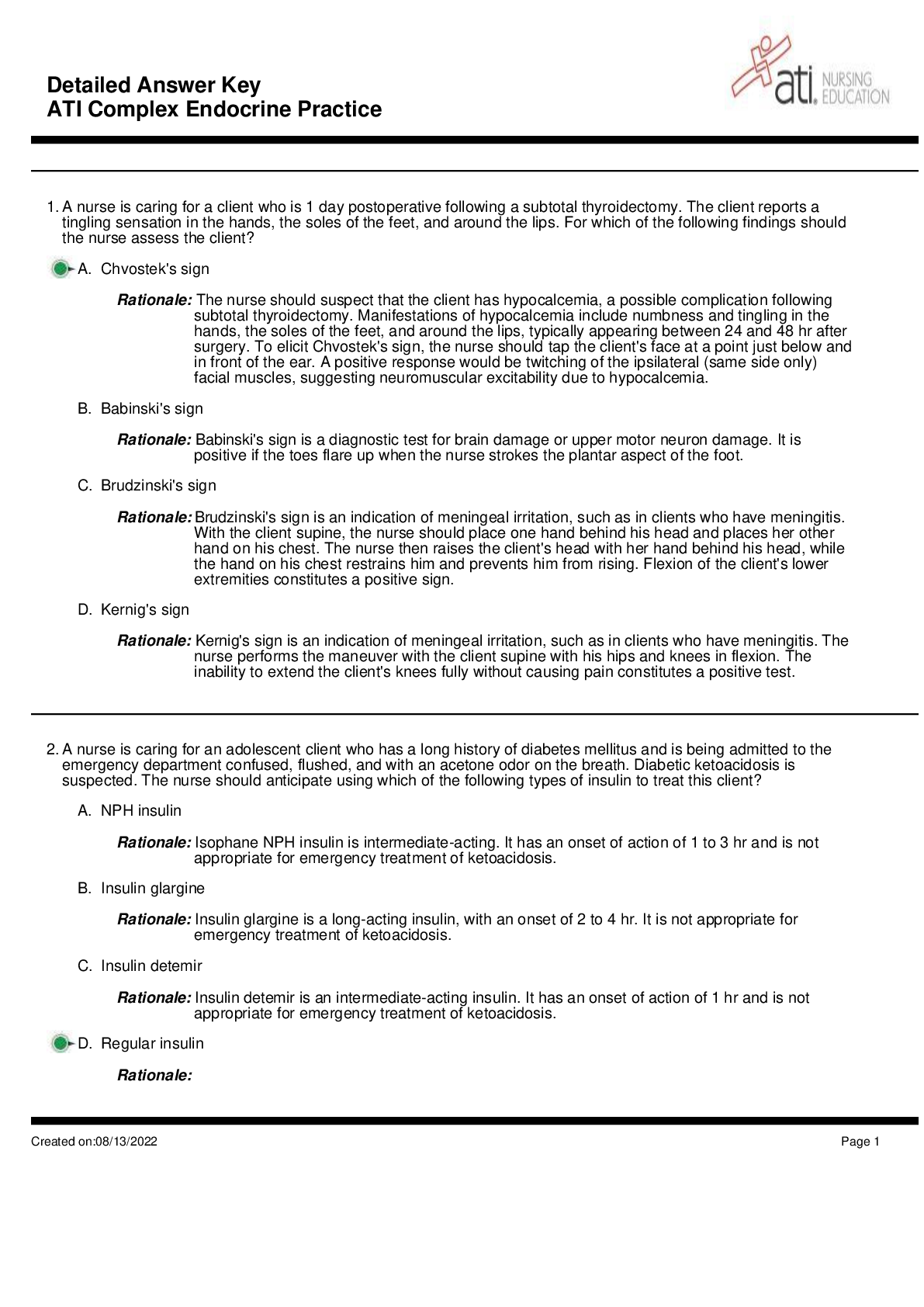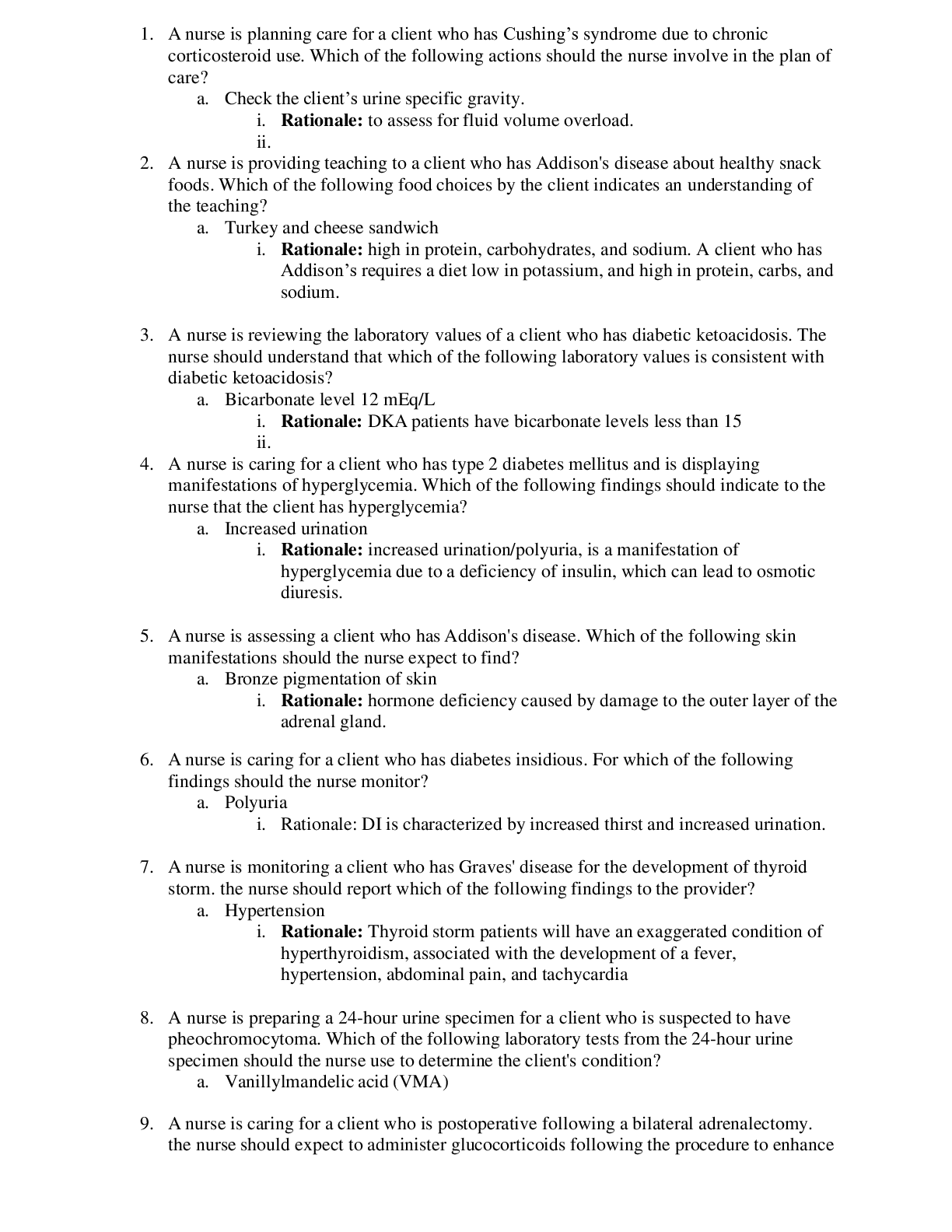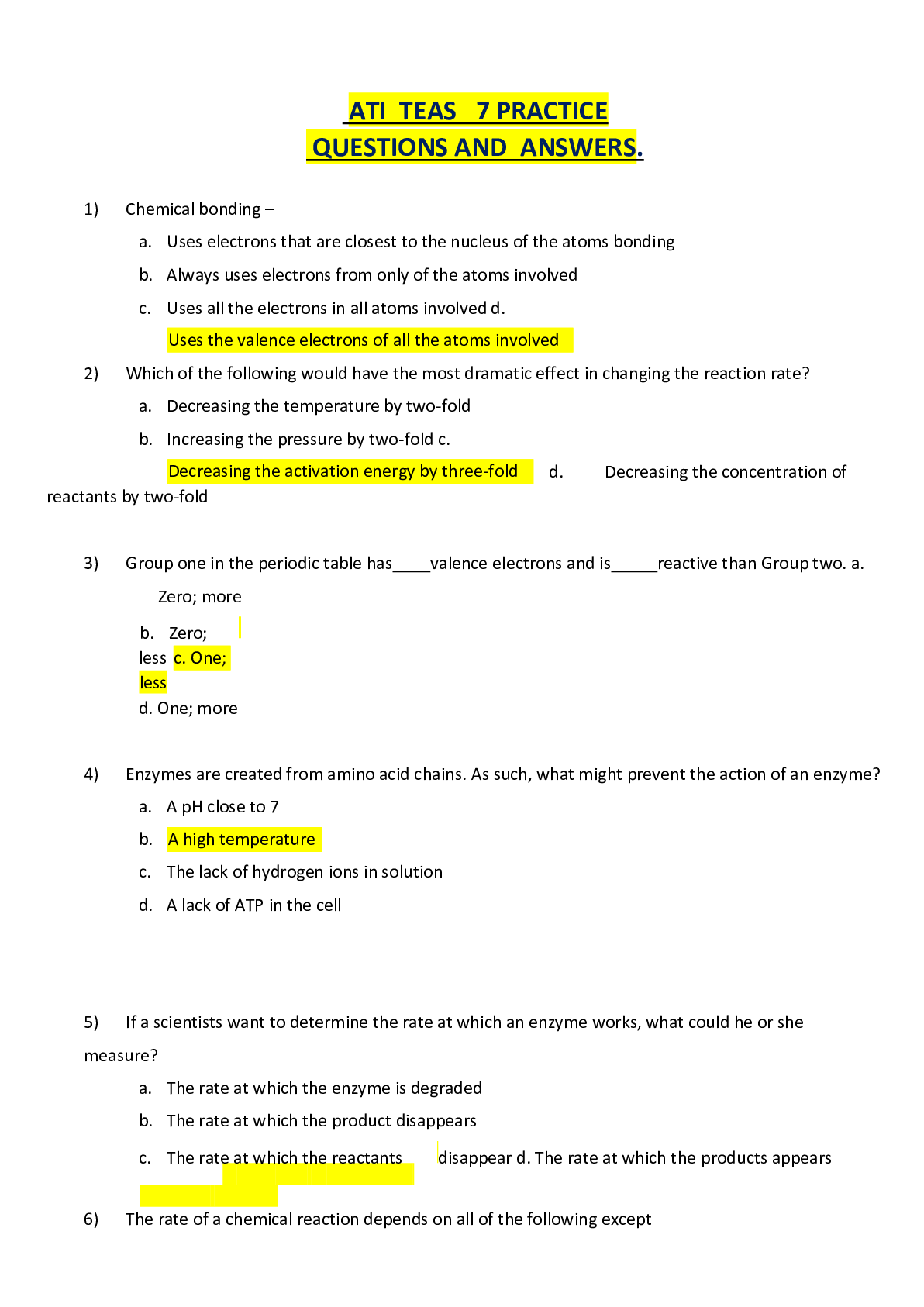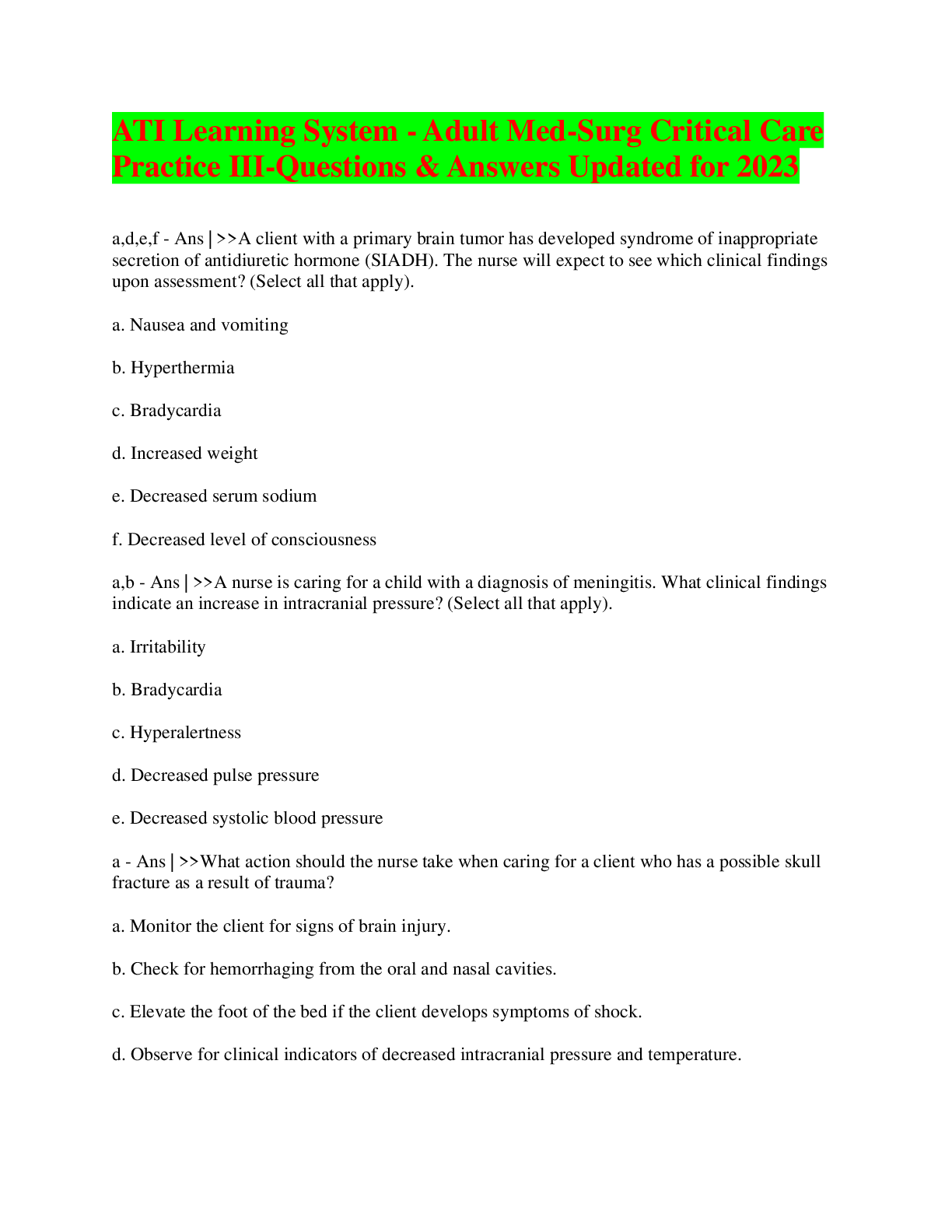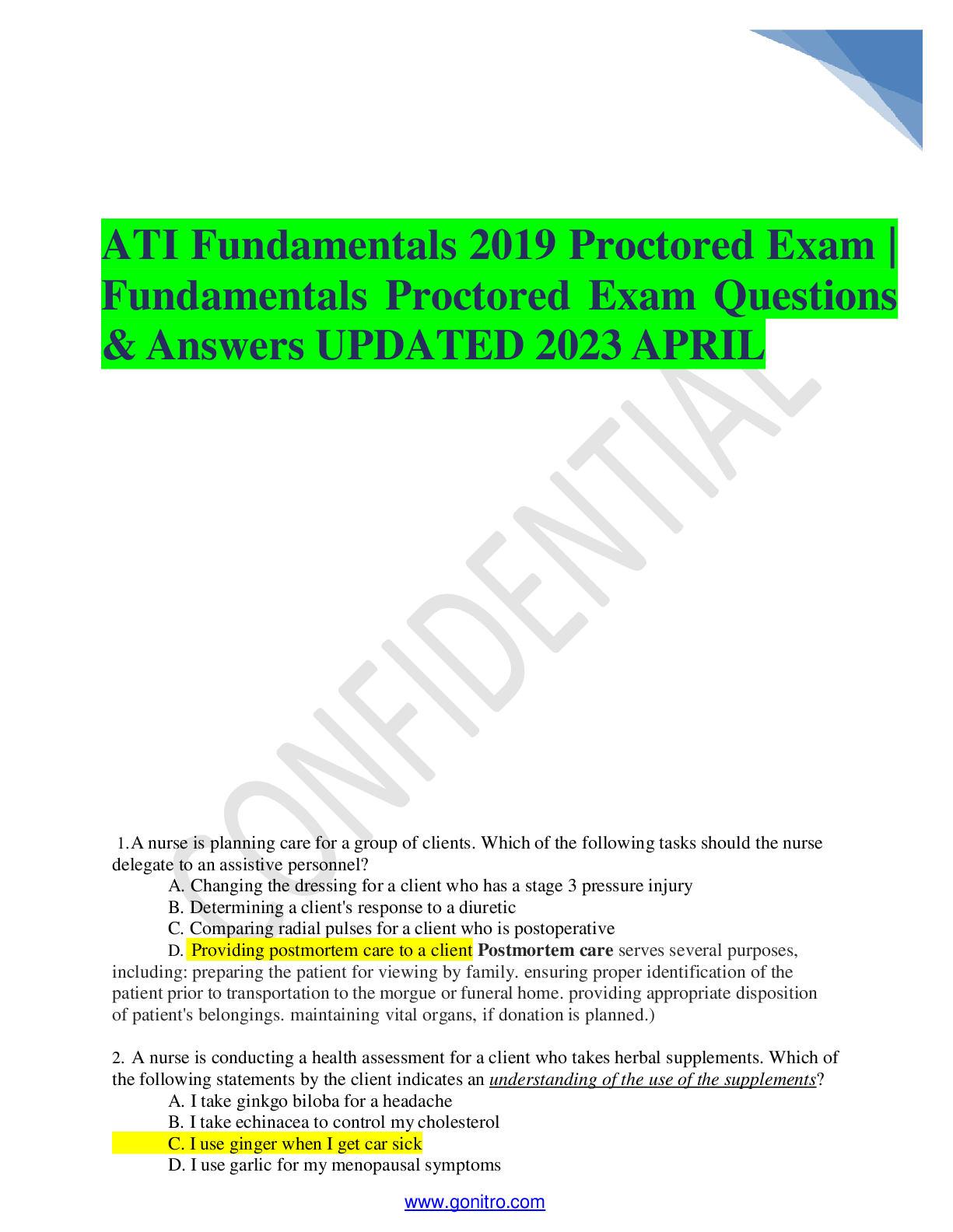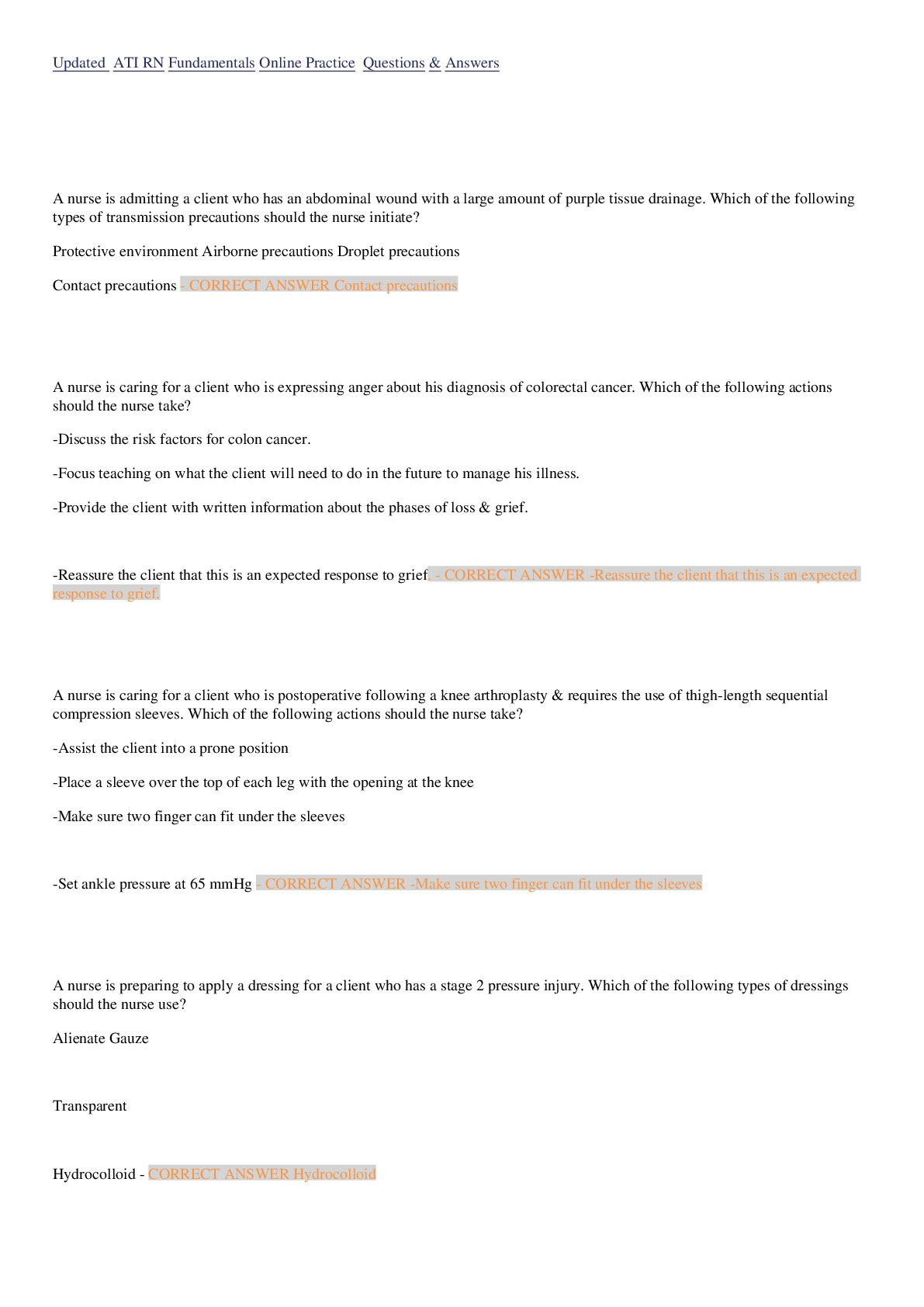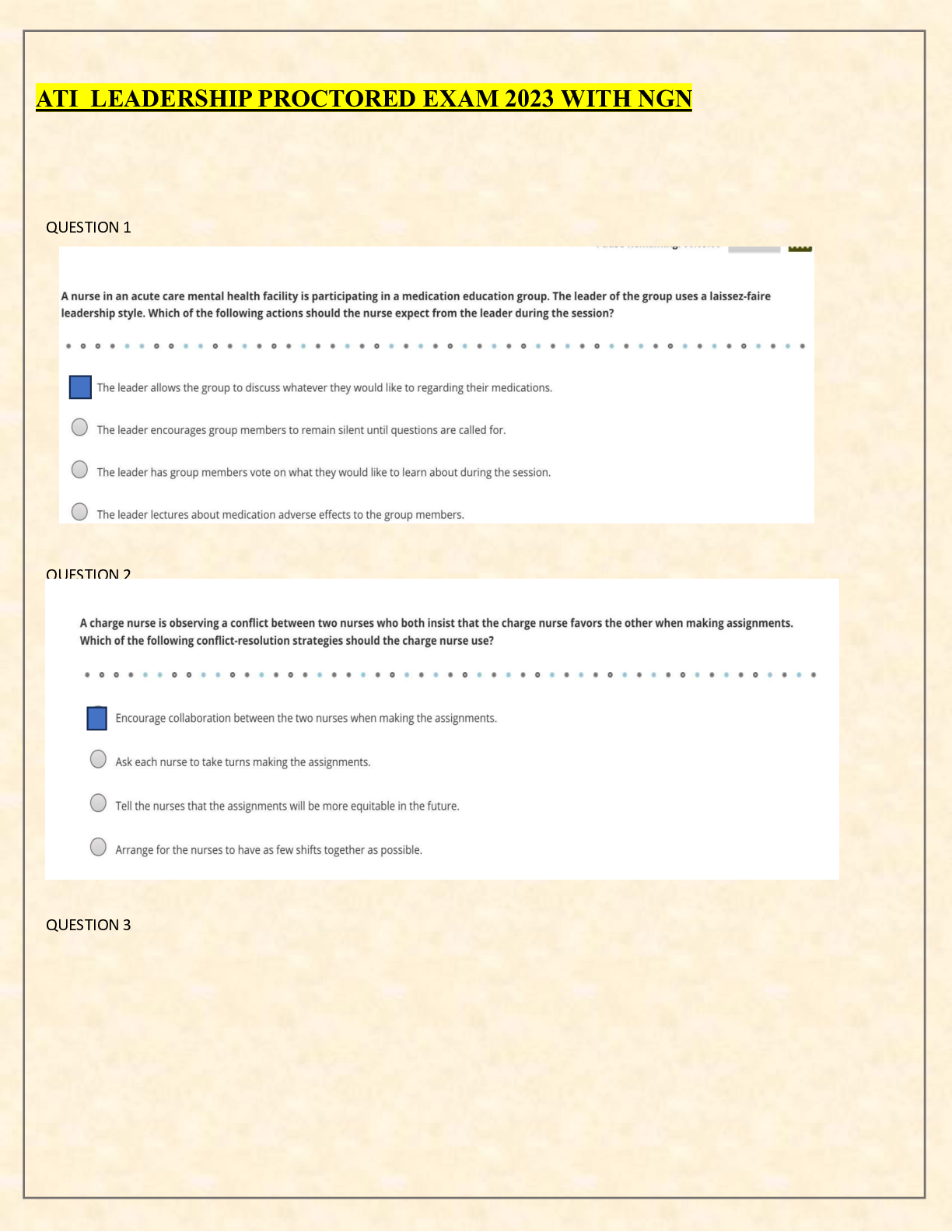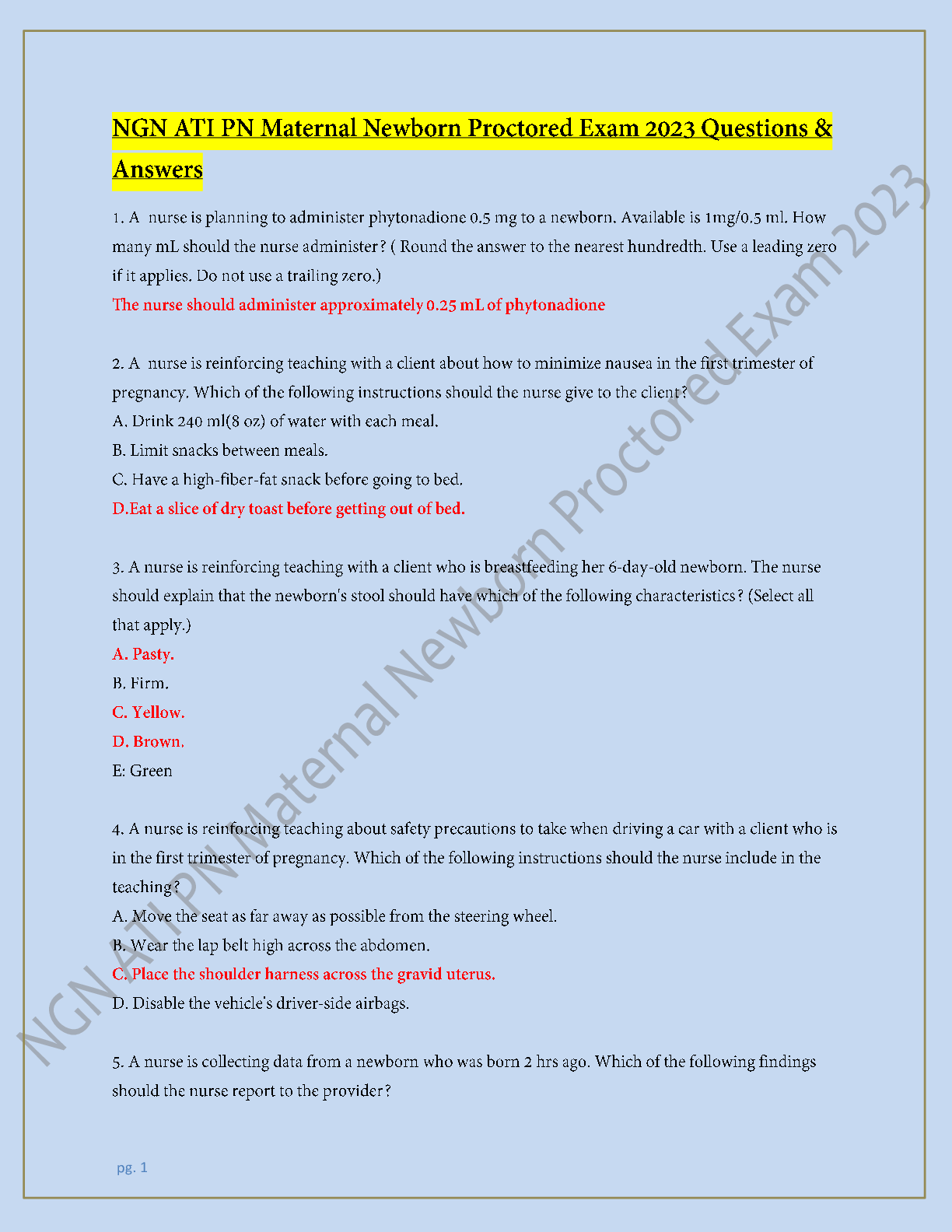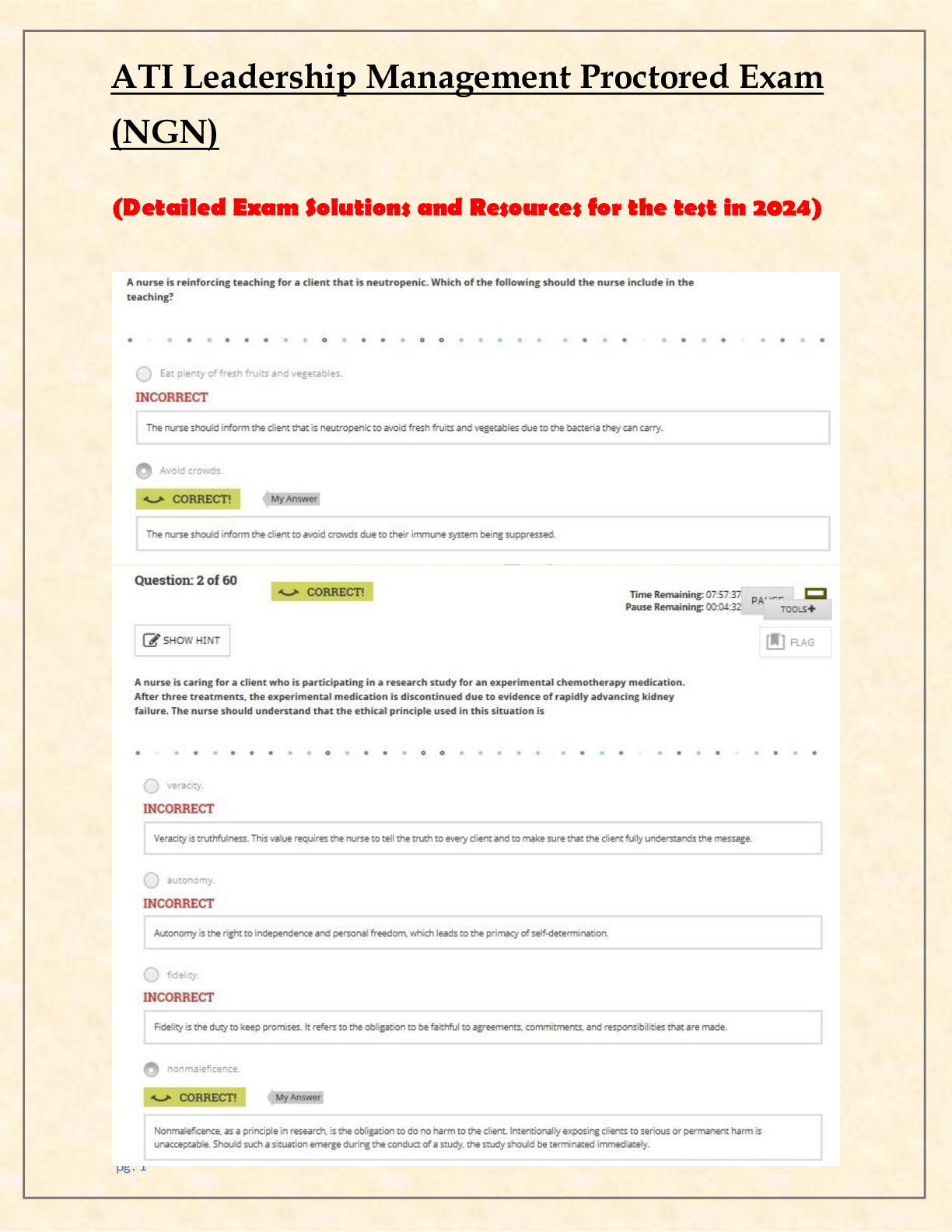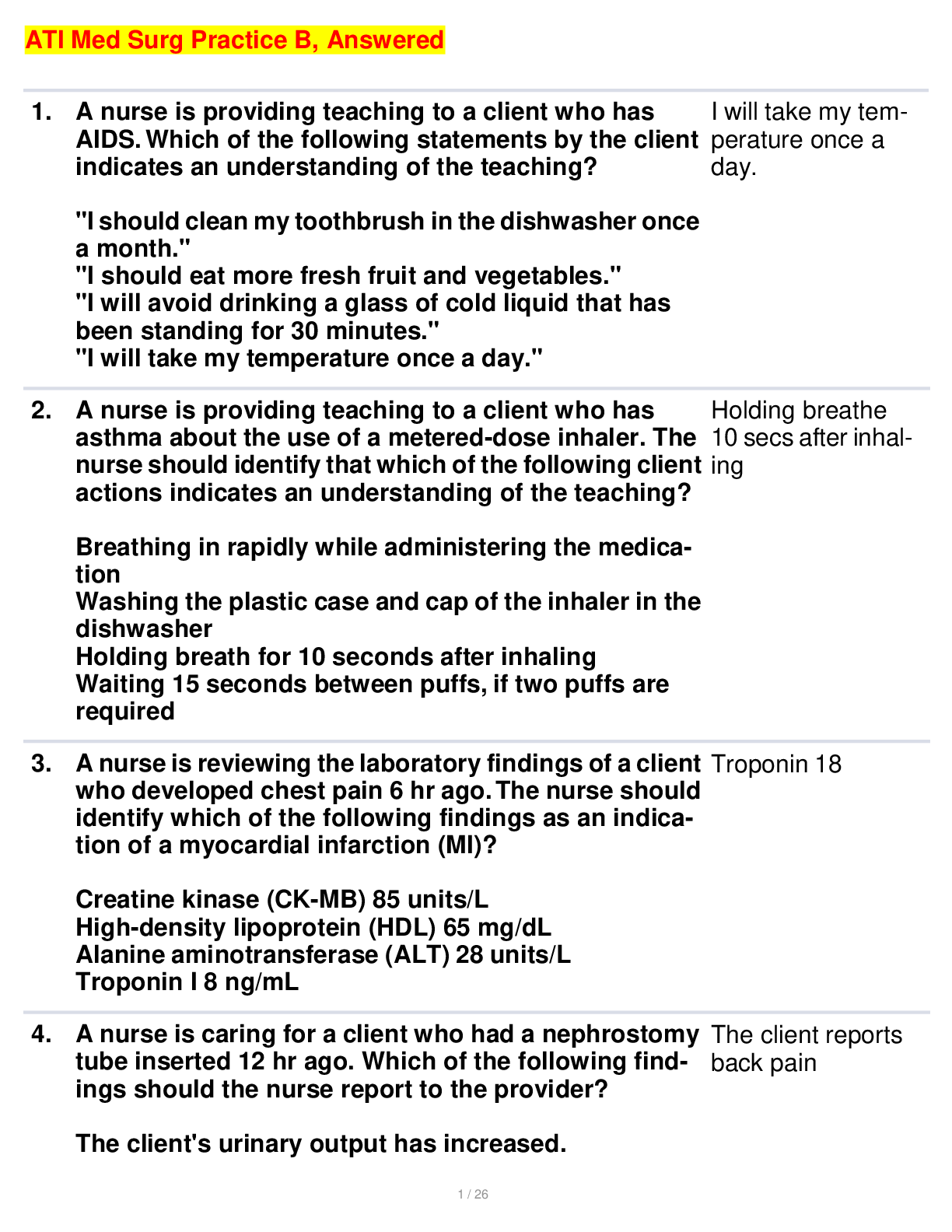Advanced Theoretical Perspectives of Nursing > ATI > SOLVED-ATI Learning System - Adult Med-Surg Critical Care-Complete Practice Questions & Answers Upd (All)
SOLVED-ATI Learning System - Adult Med-Surg Critical Care-Complete Practice Questions & Answers Updated for 2023
Document Content and Description Below
SOLVED-ATI Learning System - Adult Med-Surg Critical Care-Complete Practice Questions & Answers Updated for 20231. A nurse is assessing a client who reports severe headache and a stiff neck. The nurse... ’s assessment reveals positive Kernig’s and Brudzinski’s signs. Which of the following actions should the nurse perform first? a. Administer antibiotics b. Implement droplet precautions c. Initiate IV access d. Decrease bright lights 2. A nurse is assessing for the presence of Brudzinski’s sign in a client who has suspected meningitis. Which of the following actions should the nurse take when performing this technique? (Select all that apply) a. Place client in supine position b. Flex client’s hip and knee c. Place hands behind the client’s neck d. Bend client’s head toward chest 3. A nurse is planning care for a client who has meningitis and is at risk for increased intracranial pressure (ICP). Which of the following actions should the nurse plan to take? a. Implement seizure precautions b. Perform neurological checks four times a day c. Administer morphine for the report of neck and generalized pain d. Turn off room lights and television e. Monitor for impaired extraocular movements f. Encourage the client to cough frequently 4. A nurse is reviewing the use of the meningococcal vaccine (MCV4) for the prevention of meningitis with a newly licensed nurse. Which of the following information should the nurse include? a. The vaccine is indicated to reduce the risk of respiratory infection b. The vaccine is administered in a series of four doses c. The vaccine is recommended for adolescents before starting college d. The vaccine is initially given at 2 months of age 5. A nurse is planning care for a client who has bacterial meningitis. Which of the following actions should the nurse include in the plan of care? (Select all that apply) a. Monitor for bradycardia b. Provide an emesis basin at the bedside c. Administer antipyretic medication d. Perform skin assessment e. Keep the head of the bed flat Prof.Exams 1. A nurse is assessing a client who has a seizure disorder. The client reports he thinks he is about to have a seizure. Which of the following actions should the nurse implement? (Select all that apply) a. Provide privacy b. Ease the client to the floor if standing c. Move furniture away from the client d. Loosen the client’s clothing e. Protect the client’s head with padding f. Restrain the client 2. A nurse is caring for a client who just experienced a generalized seizure. Which of the following actions should the nurse perform first? a. Keep the client in a sideHlying position b. Document the duration of the seizure c. Reorient the client to the environment d. Provide client hygiene 3. A nurse is providing discharge instructions to a female client who has a prescription for phenytoin. Which of the following information should the nurse include? a. Consider taking oral contraceptives when on this medication b. Watch for the receding gums when taking the medication c. Take the medication at the same time every day d. Provide a urine sample to determine therapeutic levels of the medication 4. A nurse is reviewing trigger factors that can cause seizures with a client who has a new diagnosis of generalized seizures. Which of the following information should the nurse include in this review? (Select all that apply) a. Avoid overwhelming fatigue b. Remove caffeinated products from the diet c. Limit looking at flashing lights d. Perform aerobic exercise e. Limit episodes of hypoventilation f. Use of aerosol hairspray is recommended 5. A nurse is completing discharge teaching to a client who has seizures and received a vagal nerve stimulator to decrease seizure activity. Which of the following statements should the nurse include in the teaching? a. “It is safe to use microwaves that are 1,200 watts or less.” b. “You should avoid the use of CT scans with contrast.” c. “You should place a magnet over the implantable device when you feel an aura occurring.” d. “It is recommended that you use ultrasound diathermy for pain management.” Prof.Exams 1. A nurse is caring for a client who displays signs of stage III Parkinson’s disease. Which of the following should the nurse include in the plan of care? a. Recommend a community support group b. Integrate a daily exercise routine c. Provide a walker for ambulation d. Perform ADLs for the client 2. A nurse is developing a plan of care for the nutritional needs of a client who has stage IV Parkinson’s disease. Which actions should the nurse include in the plan of care? (Select all that apply) a. Provide three large balanced meals daily b. Record diet and fluid intake daily c. Document weight every other weak d. Place the client in Fowler’s position to eat e. Offer nutritional supplements between meals 3. A nurse is reinforcing teaching with a client who has Parkinson’s disease and has a new prescription from bromocriptine. Which of the following instructions should the nurse include in the teaching? a. Rise slowly when standing b. Expect urine to become dark_colored c. Avoid foods containing tyramine d. Report any skin discoloration 4. A nurse is assessing a client for manifestations of Parkinson’s disease. Which of the following are expected findings? (Select all that apply) a. Decreased vision b. PillHrolling tremor of the fingers c. Shuffling gait d. Drooling e. Bilateral ankle edema f. Lack of peripheral expression 5. A nurse is caring for a client who has Parkinson’s disease and is starting to display bradykinesia. Which of the following is an appropriate action by the nurse? a. Teach the client to walk more quickly when ambulating b. Complete passive range_of_motion exercises daily c. Place the client on a low_protein, low_calorie diet d. Give the client extra time to perform activities Side Note: Bradykinesia is abnormally slowed movement and is seen in clients who have PD. The client should be given extra time to perform activities and should be encouraged to remain active. Prof.Exams 1. A nurse is providing teaching to the partner of an older adult client who has Alzheimer’s disease and has a new prescription for donepezil. Which of the following statements by the partner indicates the teaching is effective? a. “This medication should increase my husband’s appetite.” b. “This medication should help my husband sleep better.” c. “This medication should help my husband’s daily function.” d. “This medication should increase my husband’s energy level.” 2. A nurse is working in a long_term care facility is planning care for a client in stage V of Alzheimer’s disease. Which of the following interventions should be included in the plan of care? a. Use a gait belt for ambulation b. Thicken all liquids c. Provide protective undergarments d. Assist with ADLs 3. A nurse is making a home visit to a client who has AD. The client’s partner states that the client is often disoriented to time and place, is unsteady on his feet, and has a history of wandering. Which of the following safety measures should the nurse review with the partner? (Select all that apply) a. Remove floor rugs b. Have door locks that can be easily opened c. Provide increased lighting in the stairwells d. Install handrails in the bathroom e. Place the mattress on the floor 4. A nurse is caring for a client who has AD and falls frequently. Which of the following actions should the nurse take first to keep the client safe? a. Keep the call light near the client b. Place the client in a room close to the nurse’s station c. Encourage the client to ask for assistance d. Remind the client to walk with someone for support 5. A nurse is caring for a client who has Alzheimer’s disease. A family member of the client asks the nurse about risk factors for the disease. Which of the following should be included in the nurse’s response? (Select all that apply) a. Exposure to metal waste products b. Long_term estrogen therapy c. Sustained use of vitamin E d. Previous head injury e. History of herpes infection [Show More]
Last updated: 11 months ago
Preview 1 out of 98 pages

Reviews( 0 )
Document information
Connected school, study & course
About the document
Uploaded On
May 17, 2023
Number of pages
98
Written in
Additional information
This document has been written for:
Uploaded
May 17, 2023
Downloads
0
Views
51

